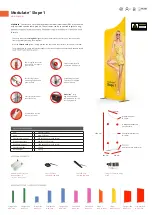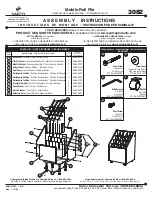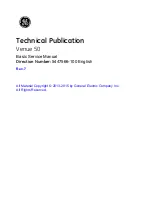
Section 2: Operating Procedures
11/11/19
SSB1566 & SSB1578 Skeleton Buckets 380-101M
10
Operating Safety
DANGER
!
To avoid serious injury or death:
•
Make sure the machine is stopped on solid, level ground
before raising load to dump. To maintain stability, raise
load only to the height necessary to complete the dump.
•
Never dump a load around gas lines, overhead power lines,
utilities, or other hazards that can cause serious injury or
death from electrocution, explosion, or fire.
•
A crushing hazard always exists around attachments. A
person can become pinched or crushed as the attachment is
rotated, raised, and/or lowered. Objects in the attachment
•
Always secure equipment with solid, non-concrete supports
before working under it. Never go under equipment
supported by concrete blocks or hydraulics. Concrete can
break, hydraulic lines can burst, and/or hydraulic controls
can be actuated even when power to hydraulics is off.
•
Do not drive up to anyone or an animal in front of a fixed
object such as a wall or bench. Never assume that the power
•
Keep bystanders, pets, and livestock away from your work
area. Never allow anyone to go near or under the
attachment or its load. The attachment and/or load can fall.
•
Do not lift a load that cannot be contained in the
attachment or has objects smaller than the openings in the
•
Keep load positioned forward enough to prevent accidental
spillage on operator and power machine.
•
Keep load slightly tilted back to secure its weight against
the hitch frame. Tilting top of hitch frame to far back can
cause load to shift and fall rearward onto the machine and/
or operator. Tilting top of hitch frame to far forward can
cause load to shift and fall forward.
•
Make sure all objects are contained and/or secured before
lifting. Do not lift a load that cannot be contained in the
attachment as the load can shift and fall.
•
Use a “spotter” when it is hard to see in the direction you
are traveling and when placing a load that obstructs your
vision. A person or animal could be nearby in a blind spot.
WARNING
!
To avoid serious injury or death:
•
Do not abuse equipment. Incorrect use of the attachment
can damage equipment structurally and cause serious
•
Backup alarm must be in good working order to warn
others. Use a backup camera or rear-view mirror that is in
good condition to help see undesirable situations behind the
unit. Drive at a slower speed to compensate for blind spots.
•
Consult your power machine’s manual for operating
capacity, lifting capacity, and operating specifications.
Exceeding rated capacities and specifications can result in
a roll-over or other serious hazard.
Section 2: Operating Procedures
Operating Checklist
Hazard control and accident prevention are dependent
upon the awareness, concern, prudence and proper
training involved in the operation, transport, storage, and
maintenance of the bucket. Therefore, it is absolutely
essential that no one operates the unit unless they are
age 16 or older and have read, fully understood, and are
totally familiar with the Operator’s Manual. Make sure the
operator has paid particular attention to:
Perform the following inspections before using your
bucket.
General Inspection
Make the following inspections with bucket attached to a
the power machine that is parked on a level surface.
1. Complete Operating Checklist table provided above.
2. Inspect the power machine’s safety equipment to
make sure it is in good working condition and that all
safety alert decals are visible and readable. Replace
all missing and unreadable safety alert decals.
3. Inspect hitch hook-up to bucket. Make sure the
loader hitch is secured under bucket’s top angle bar,
lock pins are fully extend through the bottom slots in
the bucket hitch plate, and lock handles are fully
locked down.
4. Consult your power machine Operator’s Manual to
determine if ballast is required. Add ballast if needed.
5. Inspect the condition of the power machine’s
hydraulic hoses, fittings, and valves before starting
the attachment. Make sure hoses are not pinched,
kinked, twisted, or frayed and that they will not
contact moving parts.
6. Operate bucket through its full range of movements
to check for clearances. For detailed instructions,
Operating Checklist
Check
Page
Read and follow all safety rules carefully.
Refer to “Important Safety Information” and
Safety Alert Symbols throughout this manual.
All
pages
Make sure there are no hydraulic leaks.
Refer to “Avoid High Pressure Fluids Hazards”
3
Read and follow hook-up & preparation
instructions.
Refer to “Section 1: Assembly & Set-up”.
Read and follow all operating procedures.
Refer to “Section 2: Operating Procedures”.
Read and follow all maintenance instructions.
Refer to “Section 3: Maintenance & Lubrication”.
Check bucket initially & periodically for loose
hardware. Refer to “Torque Values Chart”.










































